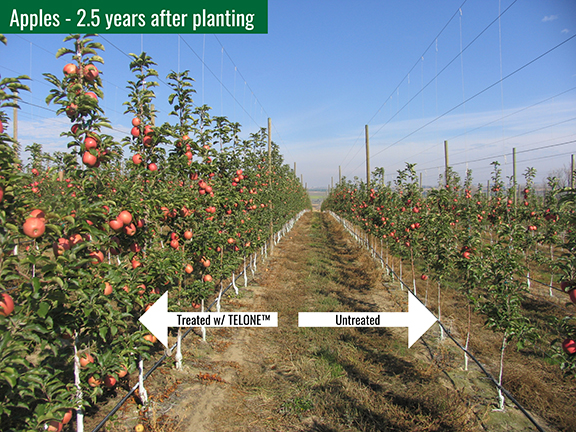Research Seeks To Find Better Grapevine Roots
When growing grapes, rootstocks can provide a better root system that offers superior root anchorage, more efficient water and nutrient uptake, better synthesis of plant growth hormones and improved storage of carbohydrates and amino acids.
While those are just some of the direct benefits of rootstocks, there are several other secondary benefits, according to Michigan State University’s Dr. Ron Perry and Dr. Paolo Sabbatini, who have been conducting research to evaluate rootstocks. Rootstocks also have the ability to help scion varieties contend with soil alkalinity, drought, chlorides and other soil stresses.
The key, though, is for the grower to select the right rootstock to match the soil conditions in that particular area. In other words, there’s no silver bullet when it comes to rootstocks.
“No one rootstock is perfect and handles all biological and abiological stresses horizontally,” Perry explains. “Some may be resistant to Phylloxera, but may be sensitive to drought stress.”
He adds that all the rootstocks used today were developed in the 1890s, and many were not developed to resist nematodes. However, with fewer chemical fumigants available and a move toward more sustainable growing practices, research is being conducted for the development of a new generation of nematode-resistant rootstocks.
In Michigan in particular, the rootknot (Meloidogyne incognito), dagger (Xiphinema Americana and X. index) and root lesion (Pratylenchus vulnus) nematodes are the biggest threat.
“Dagger nematode not only feeds on plant roots but also is responsible for vectoring Fan Leaf virus, among other viruses that affect grapes,” Perry says. “Unfortunately, many of the older established rootstocks are not resistant to dagger nematode.”
He adds that nematodes tend to infest coarse and droughty soils, with sandy soils being especially hospitable.
There are some rootstocks that seem to offer some resistance to nematodes in Michigan, however, namely Ramsey and Freedom, as well as some others in the Teleki series. Rootstock 5C, however, is the only one that has been specifically tested, Perry notes. “Rootstock resistance to nematodes is not broad-spectrum, but depends on the nematode species,” he says.
Affects Of Rootstock On Winegrape Yield and Juice Quality
Although long-term rootstock trials have not been conducted in Michigan for 45 years, Perry has been involved in research in Texas, looking at the role rootstocks play in winegrape yield, vigor and juice quality.
Perry says the effect of rootstocks is secondary. For example, some rootstocks promote excess vigor and canopy shading, which can result in inferior wine quality from harvested grapes.
But results vary. Perry points to an Australian study that found wine made of Shiraz on six rootstocks showed similar levels of anthocyanins as that produced from own-rooted fruit.
Yet another study showed that rootstocks, including own-rooted vines, had very little influence on the fruit and wine chemistry among Chardonnay, Merlot and Syrah vines in Washington.
“Specifically, in this study, rootstocks had no effect on grape anthocyanins and tannins,” Perry says.
Another study in British Columbia over seven years found that yield and fruit weight did not differ among nine scion varieties when grown on their own roots compared to four rootstocks.
“In this study, variety differences among scions mediated the impact of grape rootstock upon cropping and fruit composition,” Perry says. “Performance of a scion variety can be variable depending on the scion and rootstock combination.”
Perry notes that a study in Texas of 39 varieties, when comparing two rootstocks to own-rooted vines over nine years, demonstrated variability in vine vigor, winter hardiness, yield and juice pH.
While these conclusions provide some insight, Perry says further, consistent research is necessary.
“We need, in viticulture, to develop uniform rootstock testing such as has been going on in the NC-140 Tree Fruit work for many years,” he says.










